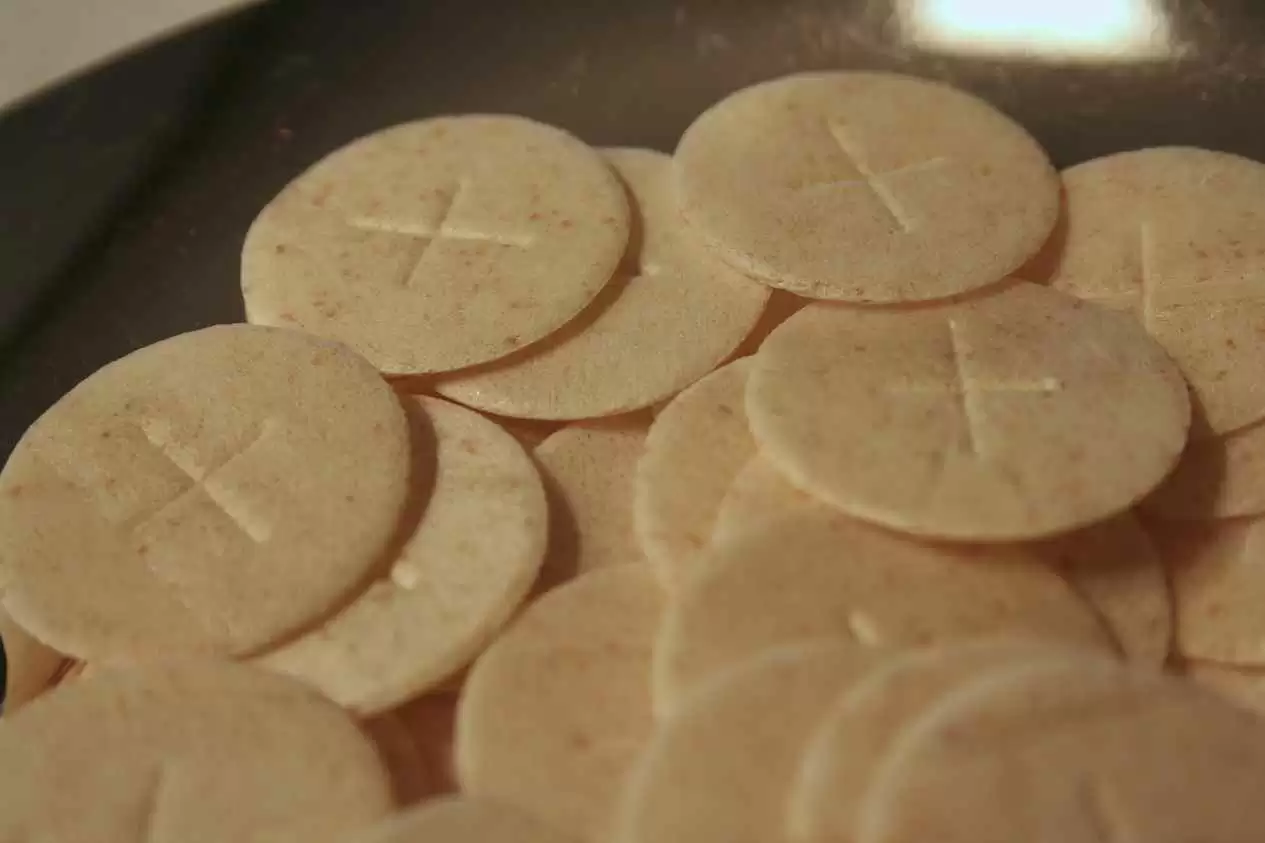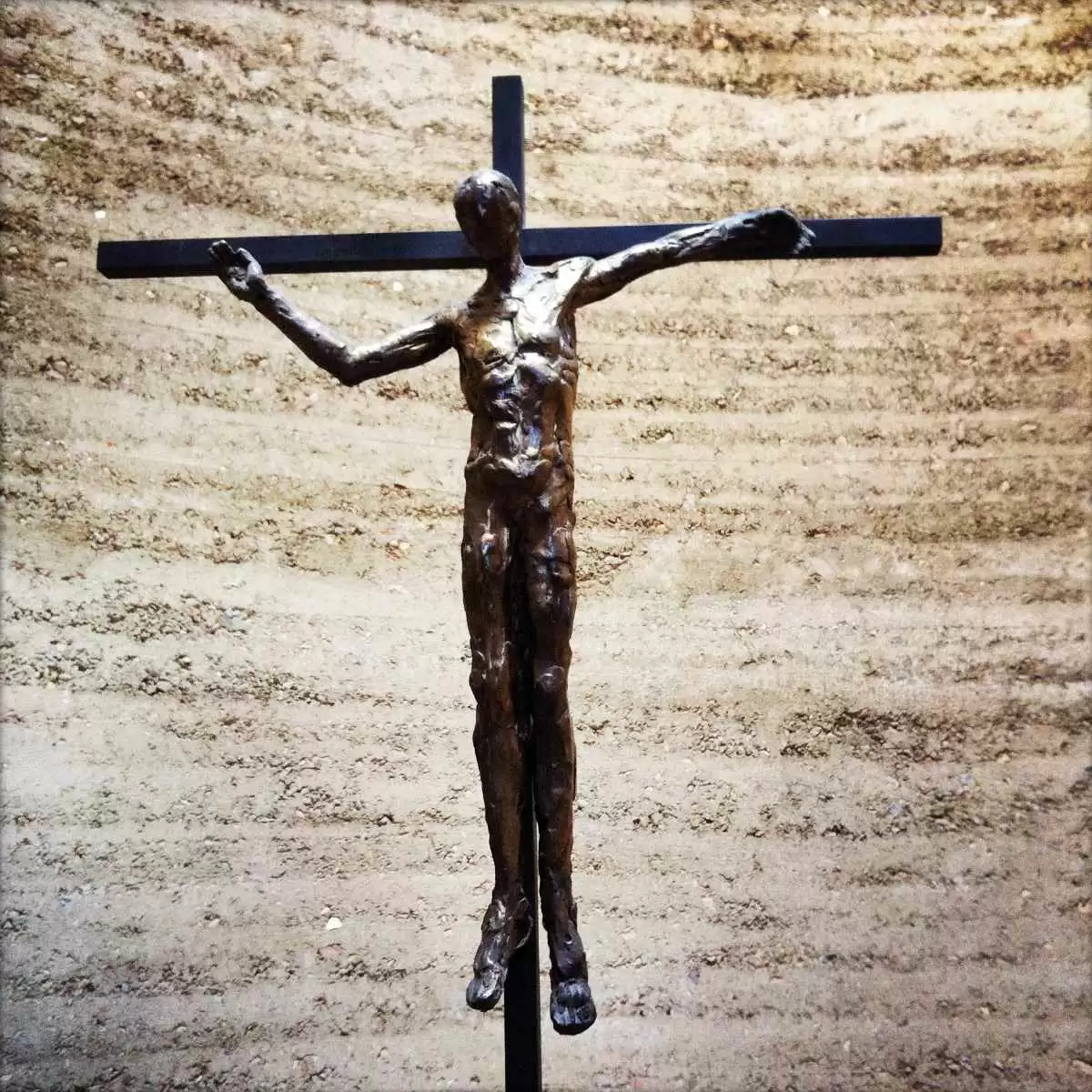Celiac.com 02/14/2025 - For Catholics with celiac disease or gluten sensitivity, participating in the Eucharist presents a significant challenge. Traditional Communion hosts are made from wheat flour and contain gluten, which can trigger severe autoimmune reactions in individuals with celiac disease. While the Church permits Communion under the form of wine alone when necessary, many parishes have sought an alternative in the form of low-gluten hosts to allow all Catholics to fully participate in the sacrament.
Church Guidelines on Eucharistic Bread
The Catholic Church has strict guidelines on the materials that can be used for the Eucharist. According to Canon Law, the bread used for the sacrament must be made solely from wheat and water. Fully gluten-free hosts, made from alternative grains such as rice or corn, are not considered valid matter for the sacrament. However, the Church has recognized that hosts containing very small amounts of gluten—just enough to maintain the structure of bread—are permissible.
Celiac.com Sponsor (A12):
This clarification was first issued in 1994 by Cardinal Joseph Ratzinger, later Pope Benedict XVI, who stated that low-gluten hosts are valid for Communion as long as they contain a sufficient amount of gluten to be considered true bread and do not include any non-wheat substances. This ruling opened the door for Catholic communities to explore ways to produce hosts that meet both the needs of celiac patients and the Church’s sacramental requirements.
How Low-Gluten Hosts Are Made
The Benedictine Sisters of Perpetual Adoration in Clyde, Missouri, were pioneers in developing low-gluten Communion hosts. Their process involves using wheat starches that have undergone special milling to remove most of the gluten while retaining enough to meet the Church’s requirements.
Unlike traditional hosts, which are made from wheat flour, the low-gluten version requires a different approach. The wheat starch creates a more gelatinous, sticky batter, making the mixing process more challenging. The baking process itself is similar to that of regular hosts, using special irons to produce thin, round wafers.
The sisters dedicated over a decade to perfecting their formula, experimenting with different techniques until they found a viable solution. Interestingly, one breakthrough moment occurred when a small leftover portion of batter was accidentally placed on a waffle iron, leading to the discovery of a new, suitable texture for low-gluten hosts. This moment of inspiration eventually led to the production of a host that was both compliant with Church doctrine and safe for most individuals with gluten intolerance.
Are Low-Gluten Hosts Safe for People with Celiac Disease?
The low-gluten hosts produced by the Benedictine Sisters have been extensively tested for their gluten content. Laboratory analysis confirmed that they contain only 0.001% gluten, a level deemed safe for most people with celiac disease. Additionally, individuals with celiac disease were invited to consume the hosts and report any adverse reactions. The results were overwhelmingly positive, with most participants experiencing no ill effects.
However, celiac disease varies in severity among individuals. Some people are highly sensitive to even the smallest traces of gluten, while others can tolerate tiny amounts without triggering symptoms. For this reason, Catholics with celiac disease are encouraged to consult their healthcare providers and, if necessary, discuss alternatives with their parish priests, such as receiving only the consecrated wine.
Historical Context: Gluten Sensitivity and the Church
The need for low-gluten hosts is a relatively modern concern. Historically, gluten intolerance was not widely recognized or diagnosed. In past centuries, individuals with celiac disease may have suffered from unexplained digestive problems without understanding the cause. With advancements in medical science, awareness of gluten-related disorders has grown, prompting the Church to address this issue so that all Catholics can fully participate in the Eucharist.
Although low-gluten hosts were not produced before modern times, the Church has always sought ways to accommodate the faithful while maintaining the integrity of the sacrament. The introduction of low-gluten hosts is a reflection of this commitment, balancing theological tradition with contemporary medical knowledge.
What This Means for Catholics with Celiac Disease
The availability of low-gluten hosts is a significant development for Catholics with celiac disease. It allows them to receive the Body of Christ in a way that is safe for their health while remaining in accordance with Church teachings. For many, this provides a sense of inclusion and spiritual fulfillment that might otherwise be difficult to achieve.
That said, there are still challenges. Not all parishes stock low-gluten hosts, and some individuals may find that even the minimal gluten content is too much for their condition. In such cases, receiving only the consecrated wine remains an option, as the Church recognizes the full presence of Christ in both species of the Eucharist.
Conclusion
The development of low-gluten hosts represents a thoughtful and faith-driven response to the needs of Catholics with celiac disease and gluten sensitivity. Thanks to the efforts of religious communities like the Benedictine Sisters of Perpetual Adoration, more individuals can fully participate in the sacrament of the Eucharist without compromising their health. While challenges remain, the availability of this option demonstrates the Church’s dedication to ensuring that all members of the faithful can share in the spiritual nourishment of Holy Communion.
Read more at: catholicnewsagency.com









Recommended Comments
Create an account or sign in to comment
You need to be a member in order to leave a comment
Create an account
Sign up for a new account in our community. It's easy!
Register a new accountSign in
Already have an account? Sign in here.
Sign In Now